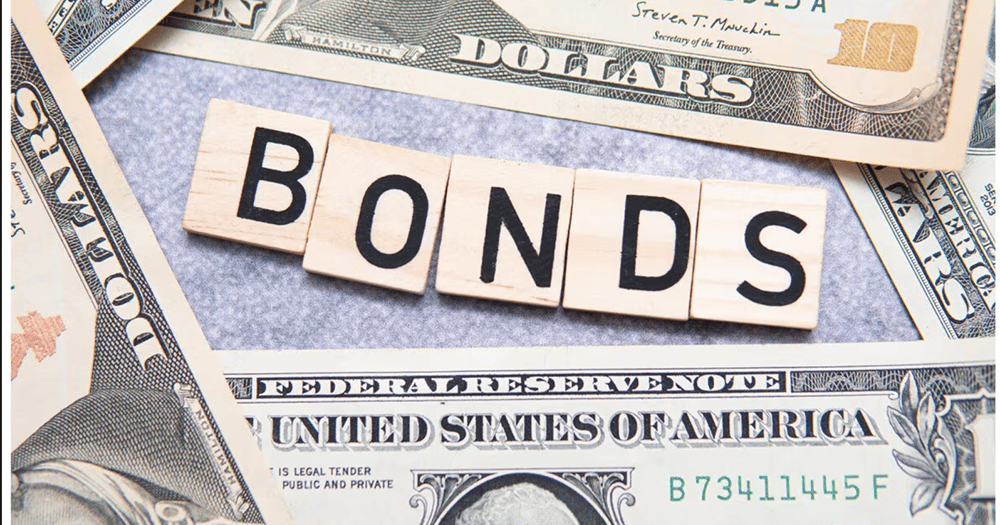Bonds in the Spotlight: What’s Happening in the Market Today and What’s Next for 2025
4/25/20254 min read


Bonds in the Spotlight: What’s Happening in the Market Today and What’s Next for 2025
The bond market is a pulse-check for the global economy, and as of April 25, 2025, it’s beating with intensity. From shifting investor sentiment to trade war jitters, the fixed-income landscape is anything but dull. Let’s break down what’s happening today, peek into the crystal ball for what’s ahead, and explore why bonds might just steal the show this year.
Today’s Bond Market: A Snapshot
Investors Return to Bonds
After five weeks of outflows, U.S. bond funds saw a $206 million net inflow in the week ending April 23, 2025. This pivot suggests investors are dipping their toes back into bonds, possibly reassured by a pause in the U.S.-China trade war tensions. It’s a sign that confidence is creeping back, but don’t pop the champagne just yet—volatility remains a key player.
Yield Curve Stays Flat
The yield curve, which plots the difference between short- and long-term bond yields, is nearly flat. This unusual shape reflects uncertainty about the economy’s direction. A flat curve often signals a transition, hinting that investors are unsure whether growth or slowdown lies ahead.
Fed’s Cautious Stance
The Federal Reserve is holding steady, keeping the federal funds rate at 4.25–4.50% as of its March 2025 meeting. Fed Chair Jerome Powell has stressed a wait-and-see approach, with core inflation still above the Fed’s 2% target. The Fed’s hawkish tone at its December 2024 meeting, despite a 25-basis-point rate cut, caught markets off guard, pushing yields higher.
Trade War Rollercoaster
Trade policies, especially U.S.-China tariff talks, are keeping markets on edge. President Trump’s surprise 90-day tariff pause in early April calmed nerves after a bond market selloff, but uncertainty lingers. Posts on X highlight the market’s sensitivity, with one user noting a 1.6% spike in 10-year Treasury yields amid tariff news.
Municipal Bonds Shine
Municipal bonds are a bright spot, offering tax-advantaged yields at levels not seen since the 2008 financial crisis. The Bloomberg Municipal AAA yield curve is drawing attention, with intermediate bonds yielding 4% and long bonds at 5%. Investors, including institutions, are snapping them up for their attractive risk-reward profile.
Inflation and Volatility
Inflation remains sticky, with consumer expectations hitting a 40-year high, fueled by tariff concerns. This has tied the Fed’s hands, making rate cuts less certain. Meanwhile, bond market volatility is elevated, with 10-year Treasury yields jumping 60 basis points in three days earlier this month—the biggest spike since 1982, according to X posts.
Looking Ahead: What’s Next for Bonds in 2025?
Rate Cuts on the Horizon?
The Fed’s projections hint at two 25-basis-point rate cuts in 2025, potentially lowering the federal funds rate to 3.75–4.00%. However, sticky inflation and trade policy uncertainty could delay these moves. If cuts materialize, short-term yields may fall faster than long-term ones, steepening the yield curve.
Volatility as the Norm
Expect a bumpy ride. Trade negotiations, fiscal policy debates, and inflation risks will keep bond yields swinging. Strategists predict 10-year Treasury yields will hover between 3.5% and 5.0%, with some forecasting a modest dip to 4.14% by year-end. Volatility could create buying opportunities for savvy investors.
Trade Policies: The Wild Card
The U.S.-China trade saga is far from over. While Trump’s tariff pause eased immediate fears, China’s defiant stance signals potential retaliation. Any escalation could reignite bond selloffs, pushing yields higher as investors demand a risk premium.
Fiscal Policy Pressures
A burgeoning U.S. fiscal deficit—$1.9 trillion in 2024, or 6.7% of GDP—is raising eyebrows. With debt servicing costs now outpacing defense spending, bond markets are signaling concerns about sustainability. Fiscal policy changes, like relaxed budgeting rules, could further steepen the yield curve.
Corporate Bonds: Yield Hunters’ Haven
Corporate bonds remain appealing despite tight spreads (0.82% for investment-grade). Strong fundamentals and yields around 5% are drawing steady inflows. However, volatility may widen spreads, offering better entry points later in 2025.
Fixed Income Opportunities
Despite the uncertainty, experts see potential in fixed income. Municipal bonds, investment-grade corporates, and even emerging market bonds from select countries could deliver solid returns. Active strategies that adjust duration and capitalize on volatility may outperform passive approaches.
Why Bonds Matter Now
Bonds aren’t just for conservative investors—they’re a hedge against uncertainty. With stocks reeling from trade war fears and equities near bear market territory, bonds are reclaiming their role as a safe haven. The inverse correlation between stocks and bonds, a 25-year pattern, is back in play, making fixed income a portfolio stabilizer.
Final Thoughts
The bond market in 2025 is a high-stakes chess game, with the Fed, trade policies, and inflation as key players. While volatility is a given, it also spells opportunity. Whether you’re eyeing municipal bonds for tax advantages or corporate bonds for yield, staying nimble is key. As one X user put it, “Bonds likely outperform in the second half of 2025.” Will they be right? Only time will tell.
Thought Questions for Readers:
How do you think U.S.-China trade negotiations will impact bond yields in the coming months?
Are you considering municipal bonds or other fixed-income assets for your portfolio? Why or why not?
With the Fed’s cautious stance, do you expect rate cuts in 2025, or will inflation keep rates elevated?
Photo Credit:business-standard.com
hello@boncopia.com
+13286036419
© 2025. All rights reserved.